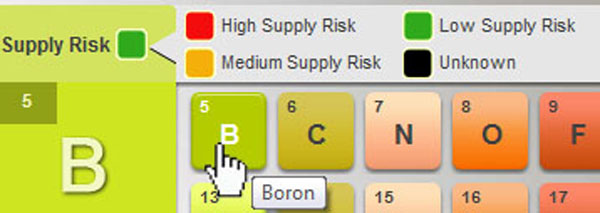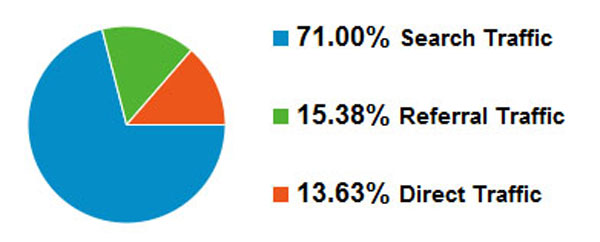2011 was 100 years after Marie Curie received the Nobel Prize in Chemistry for the discovery of Radium and Polonium. To celebrate this 2011 was announced as the International Year of Chemistry – the RSC has been integrally involved in this all year – but we were keen to have a legacy that would showcase the importance of chemistry for years to come.
One way to achieve this was to re-vamp the already popular
Visual Elements Periodic Table website – making it more interactive and user friendly.

Our new table contains details about each element including discovery date, melting and boiling points, the group, block and period that it is in, the elements uses, where it is found naturally and what materials it is used in.
We have also introduced a new feature with input from the
British Geological Society to show where the elements are sourced; they took into consideration production, distribution and other factors to work out the supply risks that could be faced.
The British Geological society provided us with a supply risk index which highlights which elements are subject to supply shortages and this is indicated on the main table by a coloured key.

This index will be reviewed on regular basis as this is not a fixed value – it changes depending on new discoveries or access to deeper sources.
The interactive part of our table highlights the groups, blocks, elements discovery and states at varying temperatures – which visitors to the site can control.
Charlotte Beard – RSC Science Team
Periodic Table – The method behind the modifications
For the Royal Society of Chemistry, the Periodic Table has always been an important consideration in our mission to ‘Advance the Chemical Sciences’. Chemistry’s foundations are built on the growing number of elements contained within it and almost every chemist will grow up with the Russian chemist Dmitri Mendeleev’s distinctive tabular presentation firmly etched into their memories.
Therefore any work we did on the Visual Elements Periodic Table needed to be carefully considered, especially as the keywords ‘Periodic Table’ are one of the biggest traffic drivers to the
Royal Society of Chemistry’s website.
The first step we took was to investigate what the visitors to the periodic table pages were using it for. We asked everyone who arrived on the site whether they were using the information as students or teachers, if they wanted element information or if they were using it for something else. As you can see in the image, nearly 800 people replied and we discovered that the biggest percentage of people were using the table for homework.

This data highlighted the most important group to test any future changes on and in a separate question, “What specific Periodic Table data were you looking for?” the responses showed that basic element information must be quick and easy to navigate and this was as important as being able to drill down into the element data.
The other important consideration was the competition we faced from other periodic tables in the search engine result pages. 71% of our traffic found the site via search and we knew that our pages should be optimised appropriately or we would languish on page two.

The final precaution we took before making changes was to check the most popular keywords that visitors had used to find the website over the last six months. As well as the words, “group 1 metals”, “hydrogen” and “nobel gases” there were several that were real surprises. I won’t give the game away as to what they were as our competitors might be reading but safe to say that future versions of the table will have considered these carefully.
To conclude, we have done a large amount of work to ensure the changes we have made, and will continue to make, to one of our favourite areas on the RSC website have considered what our visitors wanted. We hope that this posts helps to explain our thought process and we would very much value your comments or suggestions for the future of the site below.
James Stevens – Web Manager




